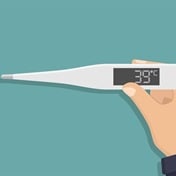
Alternative names
- Echo
- Cardiac ultrasound
- Trans thoracic echo [TTE]
- Trans-oesophageal echo [TOE] - specific type of echo - see below under " How should I prepare"
What is an echo?
Ultrasound waves are used to create an image of the heart.
What are the common uses of the procedure?
Echo remains the best and most accessible way to image the structure and function of the heart. In this respect it is probably more useful than any other imaging modality of the heart. It can also provide detailed images and measurements of blood flow through the heart. The most common indications for echo include
- assessment of the pumping [muscle] function of the heart in suspected heart failure or after a heart attack
- assessment of the heart valves [rheumatic heart disease, heart valve narrowing, leaking heart valves]
- diagnosis of infection of the heart valves [SBE]- [in conjunction with blood tests]
- assessment of prosthetic heart valve [metal heart valve] function which is often difficult to do just with physical examination.
- diagnosis of pericardial effusions or cardiac tamponade [fluid around the heart]
- tumours of the heart
- blood clots in the heart
- congenital disorders [inborn abnormalities] of the heart [for example hole in the heart]
How should I prepare?
Echo involves putting jelly on the chest wall and an echo probe is put on the jelly and moved around to obtain the images. It is entirely painless. There is no preparation required for the procedure. Sometimes better images are obtained when you press harder with the probe and this may be uncomfortable. Even better images can be obtained by doing a trans-oesophageal echo [TOE]. This involves local anaesthetic spray in the back of the throat and then a special echo probe is swallowed and positioned in the gullet just behind the heart. This is quite uncomfortable to the patient and may even lead to vomiting. For this reason, a person undergoing TOE should not eat from about midnight the night before the procedure. Most operators will try to do this procedure as quickly as possible and it usually over in under five minutes.
Risks
Echo is without risk to the patient except for TOE which can lead to vomiting and inhalation of stomach content. As the person is usually awake, this is a rare complication.
What are the limitations of the procedure?
It is sometimes difficult to obtain good images in people with lung disease or large breasts. Echo is extremely useful when performed by a skilled operator, but obtaining sufficient expertise may take years. The most experienced echo-cardiographers tend to be cardiologists and cardiac technologists. Check the credentials of the person doing your echo.




 Publications
Publications
 Partners
Partners











